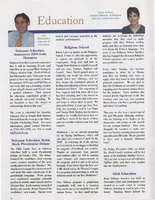Search the Special Collections and Archives Portal
Search Results

Interview with William Gus Flangas, November 12, 2004
Date
2004-11-12
Archival Collection
Description
Narrator affiliation: Operations Division Manager & Vice President, REECo
Text

Interview with Harrie Fox Hess, March 5, 2005
Date
2005-03-05
Archival Collection
Description
Narrator affiliation: Psychological Consultant
Text

Interview with Layton James O'Neill, July 2, 2004
Date
2004-07-02
Archival Collection
Description
Narrator affiliation: Health Physicist, U.S. Atomic Energy Commission; Department of Energy
Text

University of Nevada, Las Vegas (UNLV) 41st commencement program
Date
2004-12-20
Archival Collection
Description
Commencement program from University of Nevada, Las Vegas Commencement Programs and Graduation Lists (UA-00115).
Text
Pagination
Refine my results
Content Type
Creator or Contributor
Subject
Archival Collection
Digital Project
Resource Type
Year
Material Type
Place
Language
Records Classification






